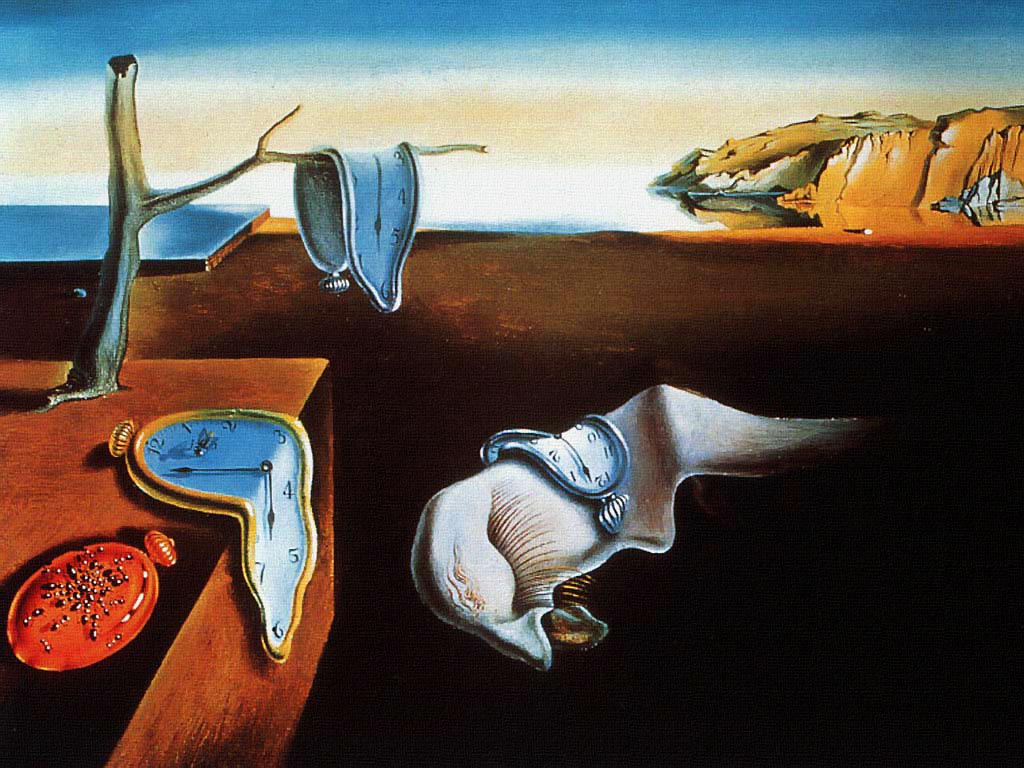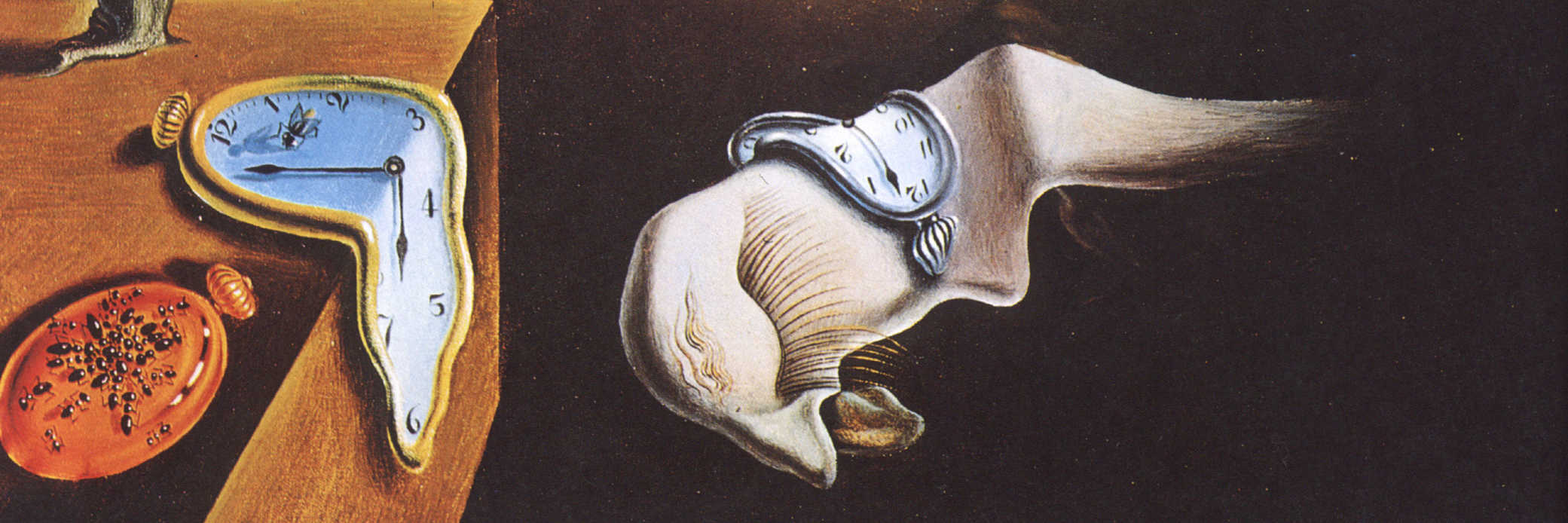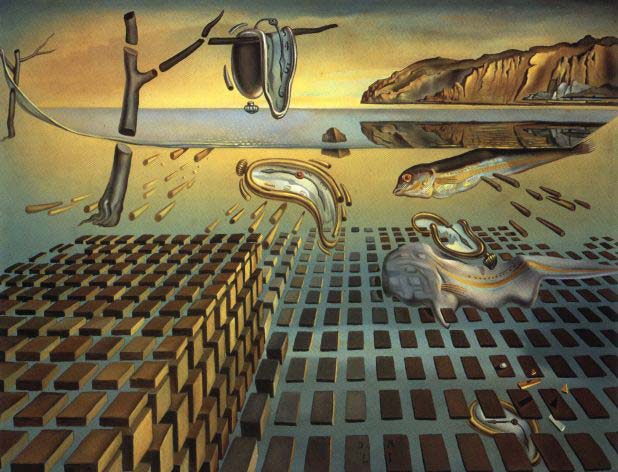

The painting is currently owned by the Salvador Dalí Museum in St.

ĭalí symbolised and marked the loss of his interest in surrealism with The Disintegration of the Persistence of Memory as his interest in nuclear physics and religion led him elsewhere. It is a 1954 re-creation of the artist's famous 1931 work The Persistence of Memory, and measures a diminutive 25.4 × 33 cm. In this new work, quantum mechanics is symbolized by "digitizing" the old image. La Desintegracin de la Persistencia de la Memoria or The Disintegration of the Persistence of Memory is an oil on canvas painting by the Spanish surrealist Salvador Dal. The imagery of the original Persistence of Memory can be read as a representation of Einstein's theory of relativity (although Dalí himself denied the connection to the theory), symbolizing the relativity of time and space. To Dalí, this image was symbolic of the new physics-the quantum world which exists as both particles and waves. Recognising that matter was made up of atoms which did not touch each other, he sought to replicate this in his art at the time, with items suspended and not interacting with each other, such as in The Madonna of Port Lligat. To Dalí, however, the fish was a symbol of life.ĭalí had been greatly interested in nuclear physics since the first atomic bomb explosions of July 1945, and described the atom as his "favourite food for thought". The distorted human visage from the original painting is beginning to morph into another of the strange fish floating above it. The hands of the watches float above their dials, with several conical objects floating in parallel formations encircling the watches. The dead olive tree from which the soft watch hangs has also begun to break apart.

Behind the bricks, the horns receding into the distance symbolise atomic missiles, highlighting that despite cosmic order, humanity could bring about its own destruction. These represent the breakdown of matter into atoms, a revelation in the age of quantum mechanics. The plane and block from the original is now divided into brick-like shapes that float in relation to each other, with nothing binding them. The landscape of Cadaqués is now hovering above the water. Disintegration depicts what is occurring both above and below the water's surface. In this version, the landscape from the original work has been flooded with water.

It was originally known as The Chromosome of a Highly coloured Fish's Eye Starting the Harmonious Disintegration of the Persistence of Memory, and first exhibited at the Carstairs Gallery in New York in 1954. It is a 1954 re-creation of the artist's famous 1931 work The Persistence of Memory, and measures a diminutive 25.4 × 33 cm. La Desintegración de la Persistencia de la Memoria or The Disintegration of the Persistence of Memory is an oil on canvas painting by the Spanish surrealist Salvador Dalí. By altering and manipulating concrete objects, Dali allows the viewer to escape reality and explore what lies beneath the surface.The Disintegration of the Persistence of Memory It examines the subconscious world and attempts to delve into the depths of human psychology. The Persistence of Memory is an important example of surrealism. Their deterioration is meant to reflect Dali's views on the collapse of human notions of a fixed universal order. The watches are a concrete symbol of space and time. Ants and flies gather around the watches as if they were decaying.īy presenting watches, which are precise, intricate and metallic objects, as organic and destructible, Dali is creating a contradiction and exploring the impossible or the dreamlike. More watches appear in the branch of a dead tree and over the edge of a random rectangular form. In the foreground, a monstrous creature appears to sleep, draped by a limp watch. The light in the work comes from an unseen sun. The Persistence of Memory shows a landscape without a horizon which seems to drift forever. To create a dreamlike state in his work, Dali overlaps unrelated and seemingly random objects in an unusual setting. The imagery which pervades the work is both mysterious and engaging Dali is using multiple images with numerous meanings in order to suggest and portray the subconscious. In the painting, Dali brings illusionist technique to the surrealist movement in order to capture the depth and magic of dream imagery and to comment on the societal state of being. The Persistence of Memory is one of Salvador Dali's best known and arguably most shocking surrealist works.


 0 kommentar(er)
0 kommentar(er)
